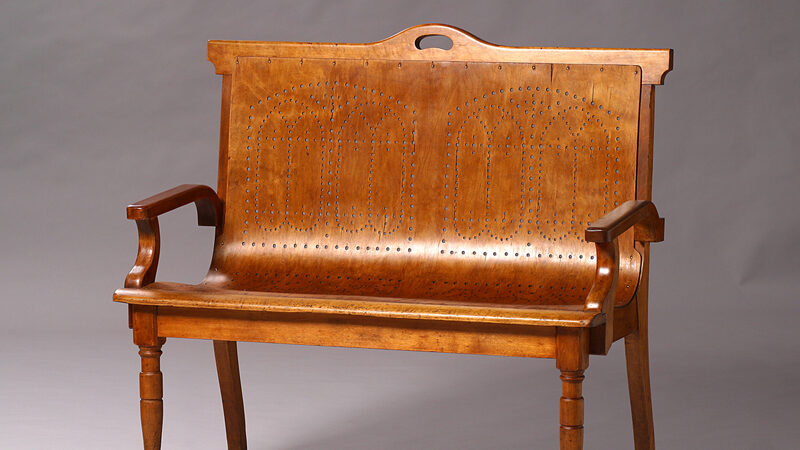
Furniture collection
The idea behind the Estonian Museum of Architecture’s furniture collection is to collect, preserve and exhibit furniture and furnishings designed by architects and interior architects. The collection is not large, consisting of slightly more than 40 items.
One of the architects who designed interiors and furniture in the 1920s and 1930s was Edgar Johan Kuusik. His chair (1925) for the Centrum Restaurant at the Tallinn Seltskondlik Maja (Social House) building was the first item in the collection.
Examples of furniture made in an Estonian style are dining room chairs and armoire based on drawings by Edgar Velbri (1930s), and August Volberg’s massive armchair with a wicker seat and backrest (1929). The latter was exhibited at the Chamber of Agriculture’s Construction Administration as a model chair that could be used by visitors to fashion an identical chair at home, with the work drawings available on request.
1960s Modernism is represented in the collection by a chair for the legendary Tallinn café Pegasus (1964), designed by the renowned interior architect Väino Tamm. The modern seating furniture contrasted to the heavier, ornamented and dark lacquered furniture of the previous decades.
The furniture collection also has a small sample of 1970s and 1980s designer furniture by Helle and Taevo Gans, Ivi-Els Schneider, Malle Agabuš, Maile Grünberg, Katrin Kask, Toivo Raidmets, Eero Jürgenson and Tea Tammelaan.
In preparations for the exhibition “The Luther factory. Plywood and Furniture” (2004), the furniture collection was supplemented by about 10 items from the Luther factory. The most noteworthy of them are a two-seater coach made of flexed plywood from the “America” series (produced 1890–1900) and a folding deck chair with a novel construction (ca 1890).









